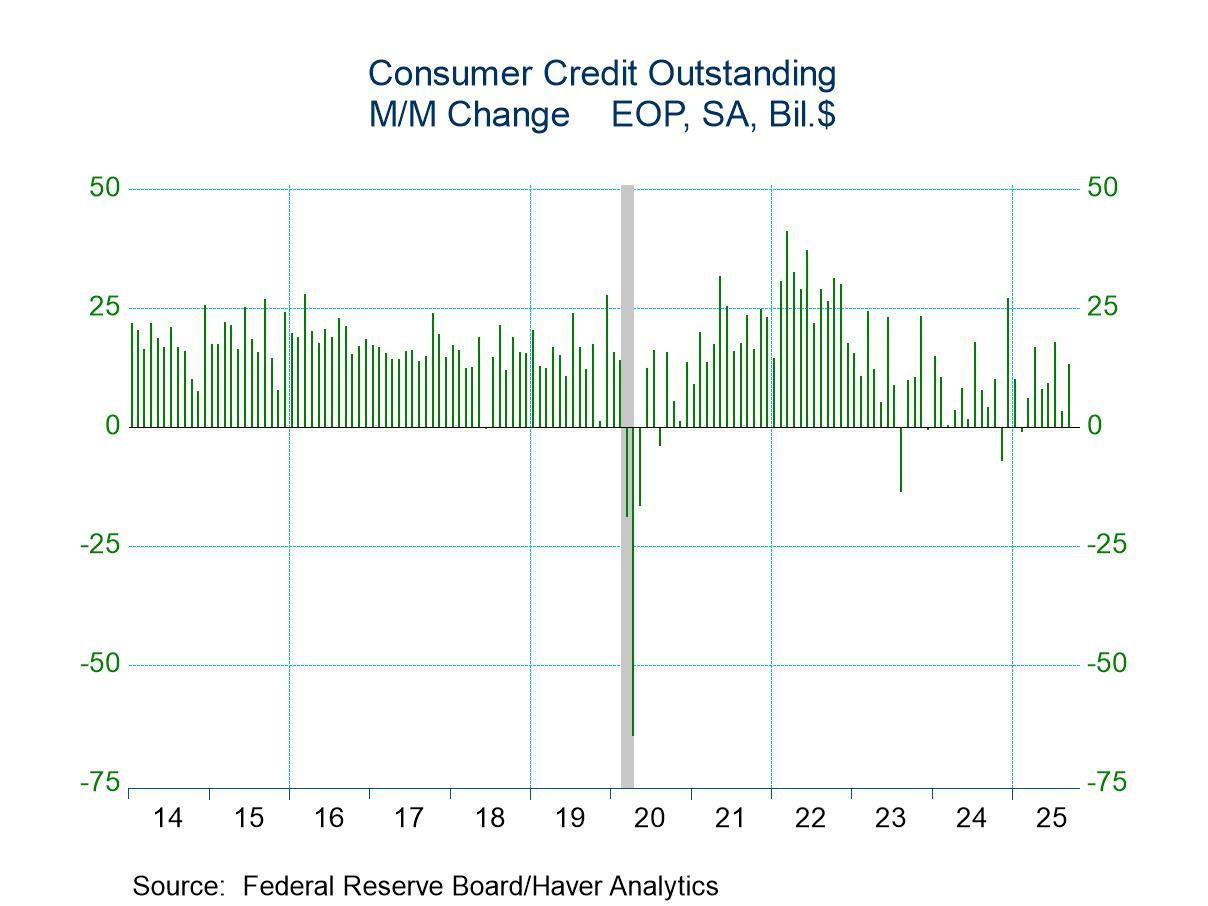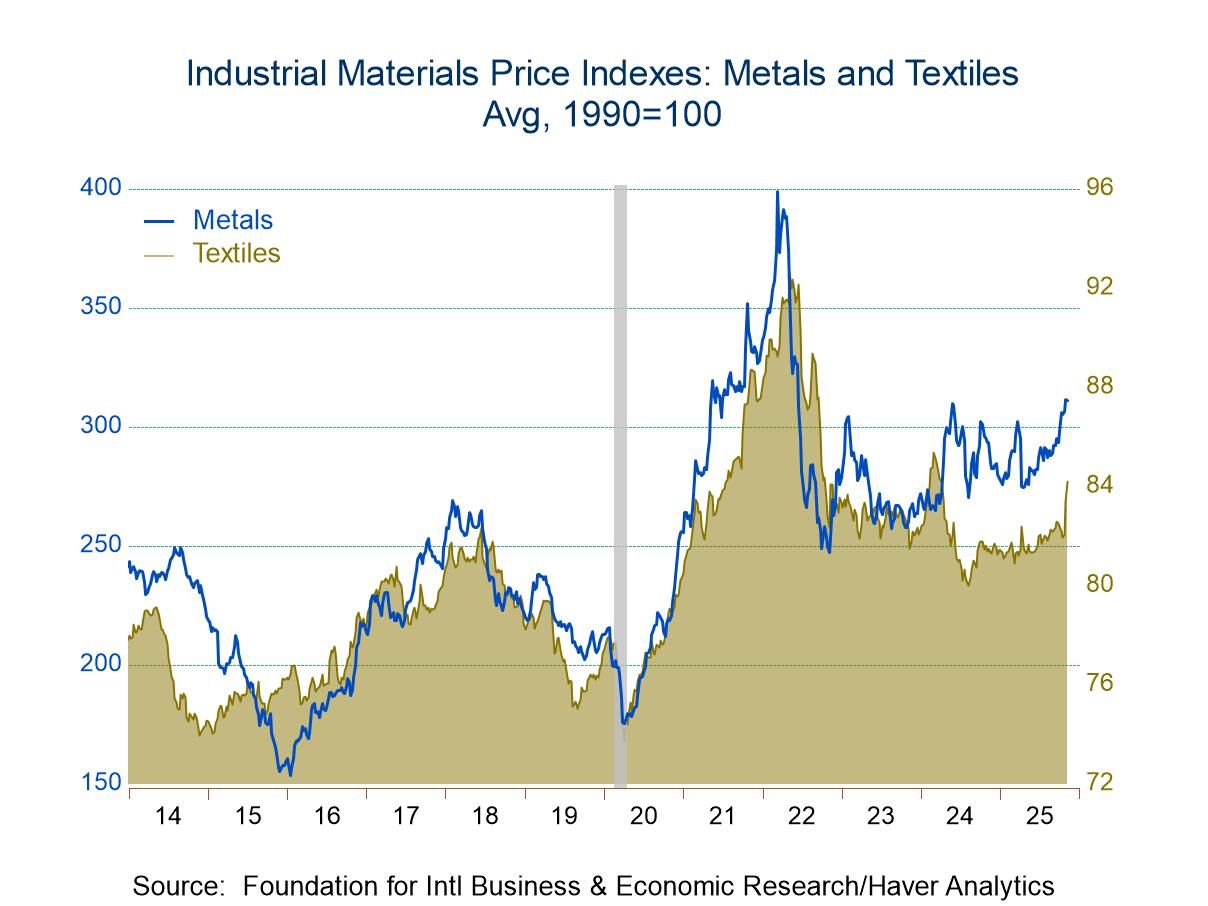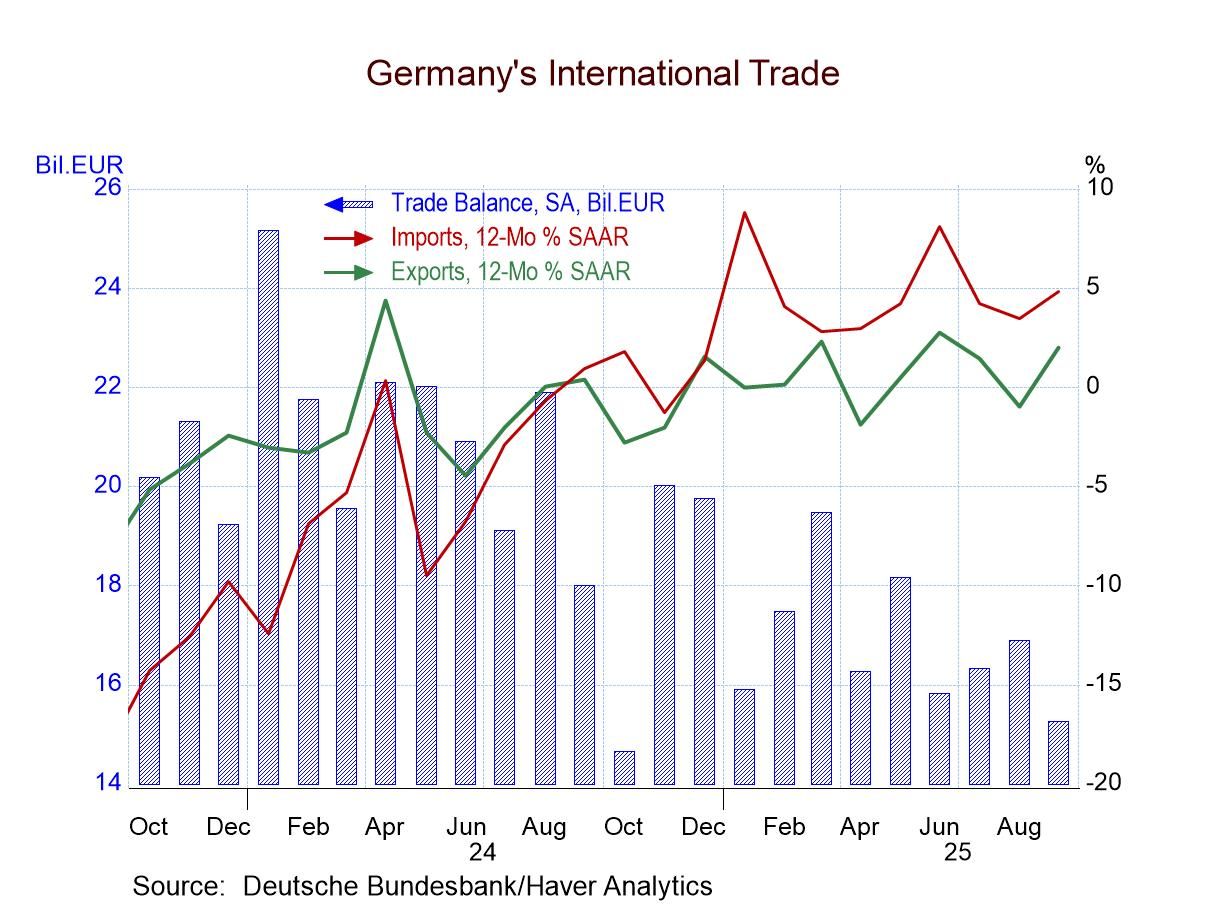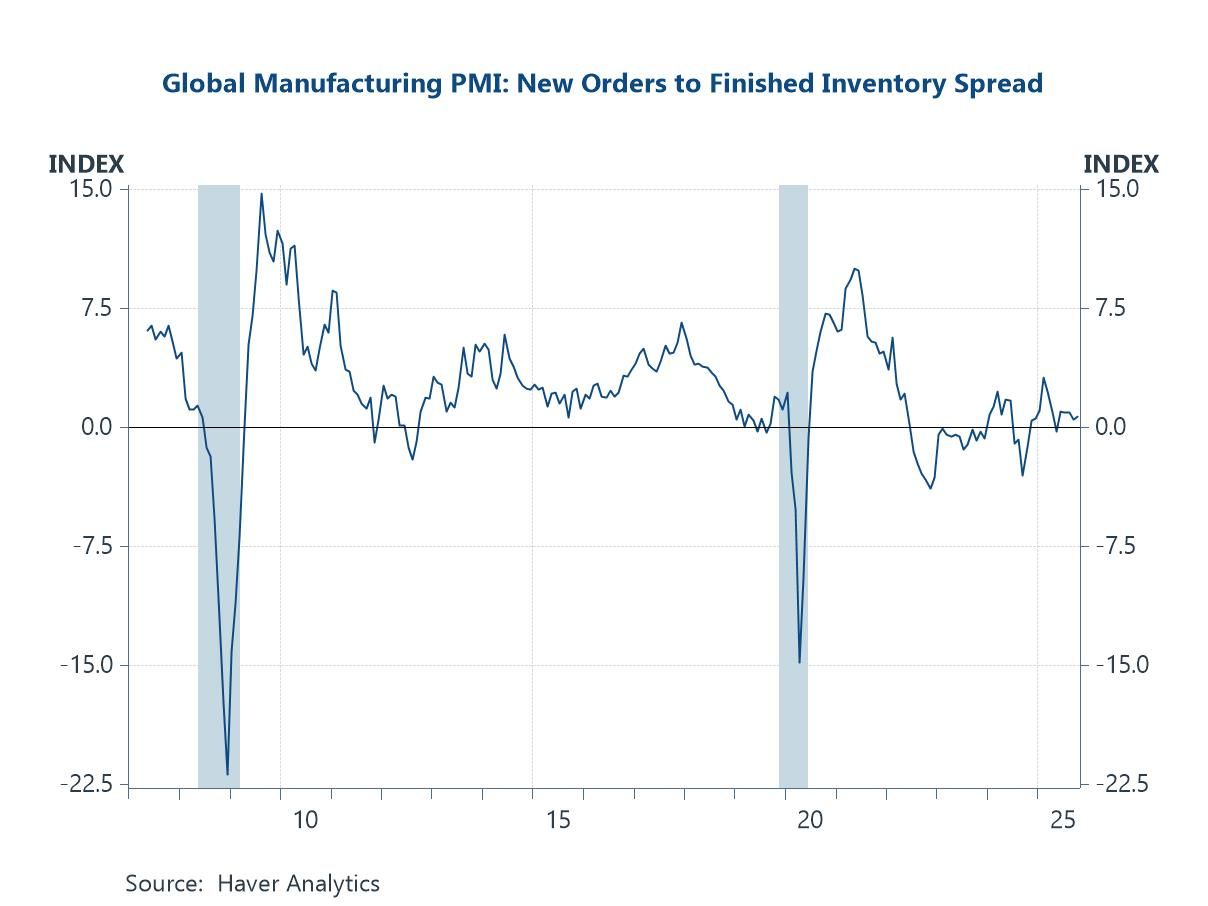 Global| Nov 02 2005
Global| Nov 02 2005Modest Gains in German Employment; Unemployment Rates Up or Down, Depending on Definition
Summary
German labor market data was largely favorable in the report issued this morning by the Federal Statistics Office and the Bundesbank. Employment of German residents rose 41,000 in September, following a 29,000 gain in August [...]
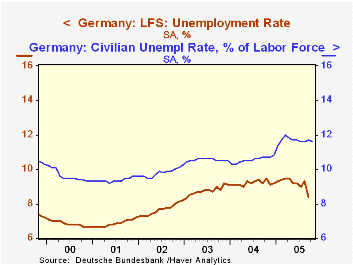
German labor market data was largely favorable in the report issued this morning by the Federal Statistics Office and the Bundesbank. Employment of German residents rose 41,000 in September, following a 29,000 gain in August (seasonally adjusted). The number of workers remains below year-earlier levels but it started to rise, however hesitantly, in May. Another positive development is a marked increase in the number of job vacancies, which numbered 498,000 in October, up 27,000 in the month and 83% greater than a year ago (272,000).
The performance of unemployment depends on which measure is used. The standard German "registered unemployment" remains stubbornly high, at 11.6% in October after 11.7% in September. This is about where the rate has been throughout 2005. The ILO definition, by contrast, has come down sharply. Its latest reading is for September, when it fell to 8.4% from 9.3% in August. This latter, while appearing quite constructive, is not so attractive when labor force developments are considered. The labor force, according to the ILO definition, fell nearly 400,000 in September. Thus, unemployment declined not so much because job market conditions were better, but because people pulled away from it.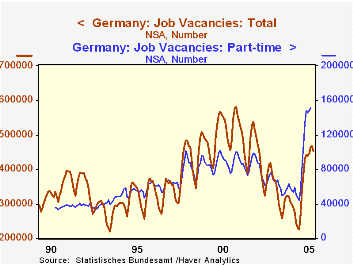
Further, the job opportunities that are available have shown most strength in the "part-time" segment. Among total vacancies, those for part-time work have hovered around an 18.6% share for several years. But in 2005, they have jumped dramatically and, accounting for more than half of the year-on-year increase in vacancies, reached 32.5% of the total in August, the latest reported figure.
So there are hesitant signs of improvement in the German labor market: some increase in jobs and at worst a stabilization of unemployment. The growing emphasis on part-time work is a two-edged sword: it can perhaps enhance the number of jobs, but each job would afford smaller wages and benefits than full-time work. Federal Reserve Chairman Alan Greenspan highlights the increased flexibility of US markets as a favorable development, which can help cushion the US economy from shocks. Seen in that light, greater flexibility in German labor markets, a topic of contention in their recent elections, could possibly also limit the harm from such negative forces as high energy costs.
| German Labor Data (Seasonally Adjusted) |
Oct 2005 | Sept 2005 | Aug 2005 | Year Ago | 2004 | 2003 | 2002 |
|---|---|---|---|---|---|---|---|
| Employment: German Residents (Mil) | -- | 38.76 | 38.72 | 38.83 | 38.78 | 38.63 | 38.99 |
| Change (Thous or %) | +41 | +29 | -0.17% | 0.38% | -0.92% | -0.56% | |
| Unemployment (ILO, Mil) | -- | 3.56 | 3.98 | 3.95 | 3.94 | 3.71 | 3.24 |
| Total = Labor Force (Mil) | -- | 42.32 | 42.70 | 42.78 | 42.71 | 42.34 | 42.22 |
| Unemployment Rate (ILO, %) | -- | 8.4 | 9.3 | 9.2 | 9.2 | 8.8 | 7.7 |
| Registered Unemployment Rate (%) | 11.6 | 11.7 | 11.6 | 10.7 | 10.5 | 10.5 | 9.8 |
| Job Vacancies (Thous) | 498 | 471 | 445 | 272 | 284 | 351 | 447 |
Carol Stone, CBE
AuthorMore in Author Profile »Carol Stone, CBE came to Haver Analytics in 2003 following more than 35 years as a financial market economist at major Wall Street financial institutions, most especially Merrill Lynch and Nomura Securities. She had broad experience in analysis and forecasting of flow-of-funds accounts, the federal budget and Federal Reserve operations. At Nomura Securities, among other duties, she developed various indicator forecasting tools and edited a daily global publication produced in London and New York for readers in Tokyo. At Haver Analytics, Carol was a member of the Research Department, aiding database managers with research and documentation efforts, as well as posting commentary on select economic reports. In addition, she conducted Ways-of-the-World, a blog on economic issues for an Episcopal-Church-affiliated website, The Geranium Farm. During her career, Carol served as an officer of the Money Marketeers and the Downtown Economists Club. She had a PhD from NYU's Stern School of Business. She lived in Brooklyn, New York, and had a weekend home on Long Island.


